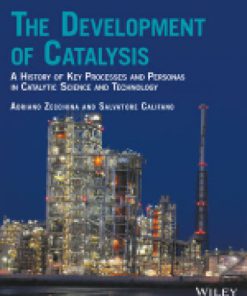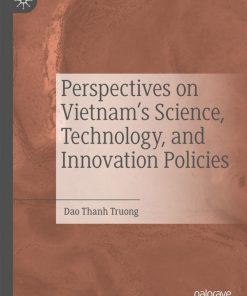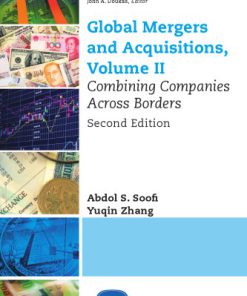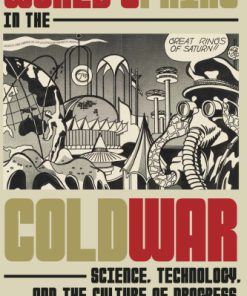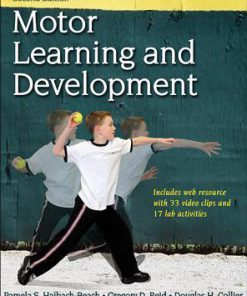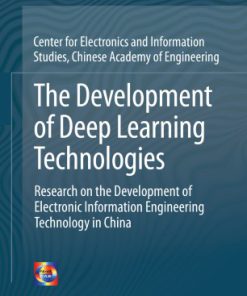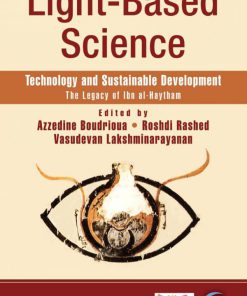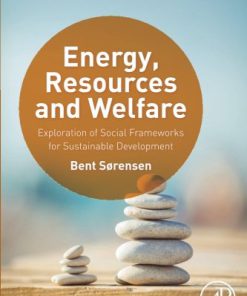The Development of Science and Technology in Iran Policies and Learning Frameworks 1st Edition by Abdol Soofi, Mehdi Goodarzi 1137572578 9781137572578
$50.00 Original price was: $50.00.$25.00Current price is: $25.00.
The Development of Science and Technology in Iran: Policies and Learning Frameworks 1st Edition by Abdol S. Soofi, Mehdi Goodarzi – Ebook PDF Instant Download/DeliveryISBN: 1137572578, 9781137572578
Full download The Development of Science and Technology in Iran: Policies and Learning Frameworks 1st Edition after payment.
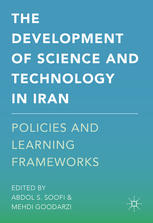
Product details:
ISBN-10 : 1137572578
ISBN-13 : 9781137572578
Author: Abdol S. Soofi, Mehdi Goodarzi
This book examines the policies, conducts, and performances of organizations tasked with developing medium and high technologies in Iran. This collection assists readers in understanding the interaction between different players involve in the process of Iran’s science, technology, and innovation development in specific technology areas over the last two decades. Chapters from expert contributors are organized into three themed parts: science and technology policy formulation and implementation, outcomes, and evaluation, including recommendations for further development of technological learning in Iran.
The Development of Science and Technology in Iran: Policies and Learning Frameworks 1st Table of contents:
Chapter 1: Introduction
Notes
References
Part I: Science, Technology, and Innovation Policies and Institutional Framework
Chapter 2: Science, Technology, Innovation Laws, and Policies in Iran: Evolution or Revolution?
1 Introduction
2 A Review of Definitions and Concepts
2.1 Policy
2.2 Laws
3 The Process of Policy Making in Iran
3.1 The Islamic Consultative Assembly (ICA)
3.2 The Guardian Council (GC)
3.3 The Expediency Council (EC)
3.4 The Supreme Council of the Cultural Revolution (SCCR)
3.5 The Cabinet of Ministers (CM)
4 A Short History of the Codification and Ratification of STI Laws and Policies in Iran
5 The Pathology of S&T Policy Making in Iran
6 Summary and Conclusion
Notes
References
Chapter 3: Fostering New Technology-Based Firms in Iran: Inspiration of World Models in Solving D
1 Introduction
2 The Law for Supporting the Knowledge-Based Companies and Commercialization of Inventions
3 The Participants in Support for NTBFs in Iran
3.1 The Governmental Organizations
3.2 The Universities and Academic Institutes
3.3 The Capital and Financial Market
3.4 Market and the Customers of Technology
3.5 Holdings and Private Companies
3.6 The Startups, Mentors, and Consultants
3.7 Intellectual Property Rights and Market
4 Conclusions
Note
Reference
Chapter 4: National Framework for Knowledge Management Strategies: The Case of the National Comp
1 Introduction
2 Research Background
3 Theoretical Background
4 Research Methodology
5 Analysis and Discussion
5.1 NSCR Is an Example for Nationally Strategic Documents (Major Policy-Making)
5.1.1 A Conceptual Model for the Development of NCSR
5.1.2 Characteristics and Usages of NCSR
5.1.3 Knowledge Management Model Based on Theoretical Principles and Roadmap Characteristics
5.2 Knowledge Management in Development of an NCSR
5.2.1 Approaches to Classification and Utilization of Knowledge in Development of Strategic Do
First Approach: Classification Based on Tacit and Explicit Types of Knowledge
Tacit Knowledge
Explicit Knowledge
Second Approach: Classification Based on Subject of Activity in NCSR
Knowledge Associated with S&T Production (Research)
Knowledge About the Education System (A Method of Science Sharing and Dissemination)
Knowledge of Applied S&T (Use of Knowledge)
Third Approach: Classification Based on Subject Areas for Developing the NCSR
Types of Knowledge in Health Sector and Scientific and Technological Priorities
5.3 Preparation of First Questionnaire and Its Distribution
6 Research Findings
6.1 First Round
6.2 Second Round
6.3 Third Round
7 Discussions
8 Conclusion
References
Part II: Outcomes of Science, Technology, and Innovation Policies
Chapter 5: Growth of Scientific Publications in Iran: Reasons, Impacts, and Trends
1 Introduction
2 Growth of Scientific Publications in Iran During the Last Two Decades
2.1 The Global Ranking of Scientific Output of Iran
2.2 The Ranking of the Scientific Output of Iran
2.3 Scientific Collaborations of Iran with Rest of the World in 2014
2.4 Limitations for Publication of Iranian Scientific Contributions in International Journals
2.4.1 Large Number of Domestic Scientific Publications
2.4.2 Nature of the Data of International Scientific Output
3 Quality of Scientific Output from Iran
3.1 The Number of Citations to the Published Scientific Works by Iranian Authors During 1996–
3.2 The H-Index
3.3 Limitations for Qualitative Improvement of Iranian Scientific Outputs
4 Connecting to Market
4.1 Limitations to the Commercialization of Inventions
5 An Analysis of Growth of Iran’s Scientific Output
5.1 Analysis of Growth Rate of Scientific Output in Iran During the Last Two Decades
5.2 Assessment of the Promotional Policy for the Commercialization of Scientific Output
6 Conclusion
Notes
References
Chapter 6: Technology Development in Iranian Petroleum Industry: Approaches, Achievements, and Cha
1 Introduction
2 The Iranian Petroleum Industry
3 Hydrocarbon Resources in Iran
4 The Structure of the Iranian Petroleum Industry
5 History of the Iranian Petroleum Industry
5.1 Evolution in the Structure of the Industry: 1908–1979
5.2 Evolution in the Structure of Iranian Petroleum Industry: After 1979
6 Economic Sanctions and Strategies for Technological Development
7 Technological Policy Making in the Petroleum Industry
7.1 Differences of Technology Policy Making in Developed and Developing Countries
7.2 The Technology Policy-making in the Iranian Oil Industry
7.3 Technology in the Petroleum Industry
8 Research and Technological Development in the Petroleum, Gas, and Petrochemical Industries in
8.1 Research and Technology Priorities in the NIGC
8.2 Development of Gas Separation Technology with Membrane
8.3 Development of GTL (Gas to Liquid) Technology
8.4 Development of MTP Technology (The Process of Producing Propylene from Methanol, Methanol to
8.5 Capabilities in Supplying Equipment and Services
9 The Role of Petroleum Contracts in Technological Development in the Iranian Petroleum Industry
9.1 Buy Back Contracts: The Prevailing Model for Upstream Transactions
9.2 License Agreements: The Prevailing Model for Downstream Activities
10 Human Resource Development Policies of the Petroleum Industry
11 Conclusions
Notes
References
Chapter 7: Development of Science and Technology in the Iranian Electric Power Industry: Challen
1 Introduction
2 Electricity Policy of the Islamic Republic of Iran
3 The Structure of the Water and Heat Generated Electric Power Industry in Iran
4 Human Resource Development
5 Electrical Energy Market in Iran
6 Technologies of Electricity Generation
7 Utilization Coefficient of Power Generation Plants
8 Yields of the Power Plants
9 Changes in Installed Power, Potential Power, and Actual Power During Peak Time
10 Rates of Growth of Power Generation and Consumption and Occurrence of Power Blackouts
11 Strength, Weakness, Opportunities, and Threats of the Electric Power Industry in Iran
12 Conclusion
Notes
References
Chapter 8: Technological Learning in the Iranian Railroad Industry
1 Introduction
2 Definition of Technological Capability
3 The Research Question
4 National and Sectoral Systems of Innovation
5 Interviews
6 Method of Gathering the Data
7 Data Analysis
7.1 Evolution of Players and in Their Networks
7.1.1 Pre-revolution Period
7.1.2 Development of the Industry After the Revolution
7.1.3 Evolution of Knowledge and Technological Learning
Development Before the Revolution
Development After the Revolution
7.1.4 Evolution in the Institutions, Laws, and the Prevailing Culture in the Relationships A
Before the Revolution
The Development After the Revolution
7.1.5 Evolution in Demand
8 Analysis of Findings
9 Challenges Facing the Players and Their Interaction Network
10 Challenges in the Category of Knowledge and Technological Learning
11 Challenges Faced by the Institutions, Legal System, and Prevailing Culture in the Relationsh
12 Challenges Faced in the Category of Demand for Rail Transportation
13 Discussion and Conclusion
Notes
References
Chapter 9: The Pharmaceutical Industry in Iran: Background and Technology Trends that Will Reshape
1 Introduction
2 A Historical Overview of the Development of Iran’s Pharmaceutical Industry
2.1 The First Period: Industrial Production of Pharmaceutical Products
2.1.1 Analysis of Technological Conditions During the First Period
2.2 The Second Period: The Advent of Generic Drugs and the Production of Pharmaceutical Product
2.2.1 Analysis of the Prevailing Technology During the Second Period
2.3 The Third Period: The Privatization of the Pharmaceutical Industry
2.3.1 Analysis of the Prevailing Technology During the Third Period
3 Technological Development of the Iranian Pharmaceutical Industry
4 Iran’s Pharmaceutical Market
5 The Future of the Pharmaceutical Industry in Iran
6 The Impact of the Executive Branch
7 The Impact of the Legislative and Judiciary Branches
8 R&D as the Main Engine of Development in the Pharmaceutical Industry
9 The Roles of Financial Systems in the Pharmaceutical Industry
10 Summary and Conclusions
Notes
References
Chapter 10: Innovation in the Computer Game Industry in Iran
1 Introduction
2 A Review of Past and Present Conditions of Computer Games in the World
3 The Past and Present Condition of Computer Games in Iran
4 System of Innovation of Computer Game Industry
5 An Overview of the System of Innovation of the Computer Game Industry in Iran
Notes
References
Chapter 11: Development of Fuel-Cell Technology in Iran
1 Introduction
2 Development of Fuel-Cell Technology in Iran
3 Phase One: Start of Scattered Activities (1993–2000)
4 Phase Two: Planning with Limited Resources (2001–2007)
5 Phase Three: Appearance of a Hidden Problem (2008–2014)
6 Conclusions
References
Chapter 12: Technological Capability Building in the Satellite Communications Industry in Iran
1 Introduction
2 Satellite Communication Technology
3 VSAT Market in Iran
4 Challenges Ahead
4.1 Repairing Boards and Parts
4.2 Tuning Hub Parameters
4.3 Procurement of More Remote Terminals
4.4 Adding Features to Terminals
4.5 Bugs and Design Problems
5 Formation of R&D Department
6 First Step: Building Testers
7 Step Two: Smart Copy!
8 Step Three: Design and Development
9 The Structure of VSAT Terminals
9.1 Outdoor Unit
9.2 Indoor Unit
9.3 Tests and Failures
9.4 Adding More Features
10 Step Four: Leveraging to the Next Generation
11 Step Five: Competing with Rival Technologies
12 Lessons Learned
12.1 To R&D or Not to R&D
12.2 What to R&D and What Not to R&D
12.3 To Export or No to Export
12.4 R&D People
12.5 Benefits of R&D for a Technology Follower
13 Confronts Onward
Notes
References
Part III: Policy Evaluation and the Path to Further Technological Learning
Chapter 13: Improving Iran’s First Integrated Evaluation of Science and Technology
1 Introduction
2 Typology of National S&T Evaluation Systems
2.1 Classification Based on Governance System
2.2 Classification Based on Analytical Framework
2.3 Classification Based on the Funding Strategy to the Innovation Process
2.4 Classification Based on the Practical Method
2.5 Classification Based on Budget Allocation Tool
2.6 Presenting the Typology
3 Determining the Iranian National Evaluation System in the Suggested Typology
3.1 How to Use Evaluation Results
3.2 Analytical Framework
3.3 Strategy of Injecting Funds into Innovation Process
3.4 The Degree of Comprehensiveness of the Methods
3.5 How to Allocate Budgets
4 Proposing a New System of S&T Evaluation in Iran
4.1 How to Use the Evaluation Results
4.2 Analysis Framework
4.3 Strategy of Injecting Funds into the Innovation Process
4.4 Comprehensiveness Degree of the Method
4.5 How to Allocate Budget
5 Conclusions
Note
References
Chapter 14: The Long-Term Impact of Economic Sanctions on the Technological Development of Iran
1 Introduction
2 Structural Problems of the Technological System of Iran
3 Review of Literature of Economic Impact of Sanctions
4 The General Conditions of Resisting Sanctions in Iran
5 The Process of Research on the Effects of Sanctions Against Iran
6 Analysis of the Findings
7 The Positive Effects of the Sanctions
8 The Direct Negative Impacts
9 Impeding Transfer of Technology
10 The Indirect Negative Effects of the Sanctions
11 Summary and Conclusion
12 Notes
References
Chapter 15: Technological Learning: Lessons from the Industrial Policy States of East Asia
1 Introduction
2 Role of State in Economic Coordination
3 The Role of the State in Economic Coordination: Neoclassical Economics
4 Industrial Policy: The State’s Fulfillment of Entrepreneurial and Conflict Resolution Functio
4.1 Conflict Resolution
4.2 The Entrepreneurial Function of the State
5 Industrial Policy and the East Asian Economies
6 Characteristics of an Effective Bureaucracy for Implementation of Industrial Policy
6.1 Creation of Pilot Agency
6.2 Methods Used in Achieving the Goals of Industrial Policy
7 The Industrial Policies of South Korea
8 South-Korean Macro-Industrial Policy
9 Industrial Policy in China
10 Goals of China’s Industrial Policy
11 State-Firm Strategic Coordination as a Tool of Industrial Policy
12 China’s Industrial Policy-Making Authorities
13 Pilot Enterprise Groups for Coordination and Support by the Central Government
14 Comparing the Iranian and Korean Economic Policies and Performances
15 Policies and Activities of the Iranian Government in Technological Learning
16 Summary and Conclusion
People also search for The Development of Science and Technology in Iran: Policies and Learning Frameworks 1st:
technology in iran
iran technology development
iran science and technology
iran’s technological advancement
science and technology in iran a brief review
Tags: The Development, Science, Technology, Iran, Policies, Learning Frameworks, Abdol Soofi, Mehdi Goodarzi
You may also like…
Politics & Philosophy
Business & Economics
Global Mergers and Acquisitions, Volume II: Combining Companies Across Borders Abdol S. Soofi
Engineering
World s Fairs In The Cold War Science Technology And The Culture Of Progress Arthur P. Molella
Politics & Philosophy - Social Sciences
Engineering - Environmental




